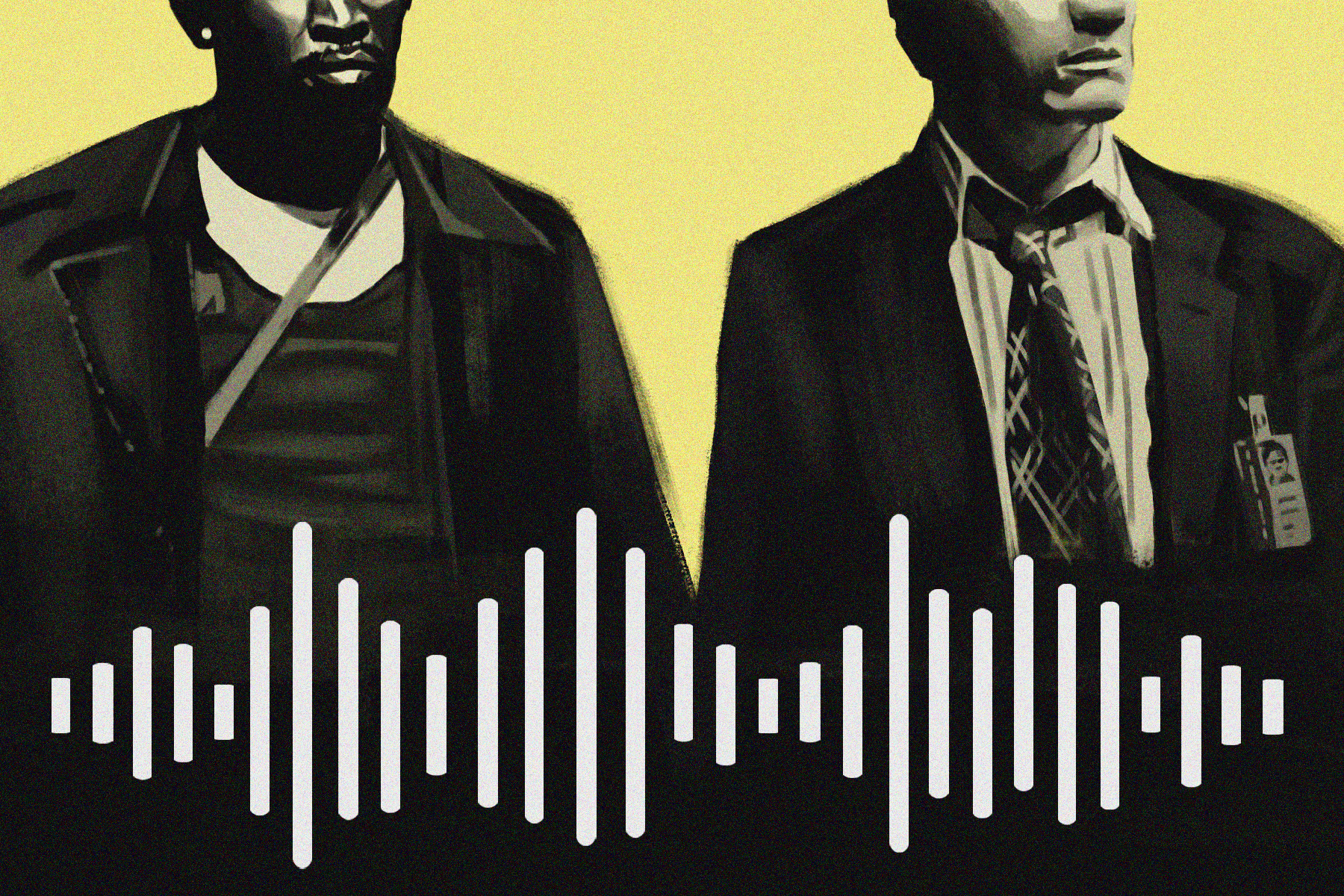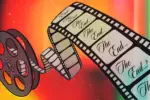Few television shows in the last two decades have solidified themselves in the public’s consciousness quite like HBO’s thrilling crime drama “The Wire.” Populated by an extensive ensemble cast that brought the city of Baltimore’s police force and criminal underbelly to the television screen, the show told a gripping story of a destitute community and the broken institutions that perpetuated its plight. Though the show lacked a star-studded cast, its greatest strength was the acting talent of those chosen to portray the characters, humanizing the conflict of a community grappling with its identity and security.
The show first aired in 2002, and for its 20th anniversary, HBO commissioned a podcast to dive into the characteristics of “The Wire” that made it an indelible cultural force. “The Wire at 20” is the product of that exploratory journey, a nonlinear account of the people and ideas that made the show great. Only five episodes of the podcast have been released, yet “The Wire at 20” is already the definitive account of one of television’s most dynamic shows.
Rapper Method Man, who portrayed the drug lord Melvin “Cheese” Wagstaff on the show, narrates the podcast. His gruff and energetic demeanor imparts a necessary air of authenticity as he leads listeners through interviews with the cast and production team while discussing the real-world influences that shaped the show. The grounded quality of Method Man’s narration mirrors the podcast’s greater goal of examining the way in which fiction can craft a compelling story while remaining true to the reality it is based upon.
Each episode of the podcast focuses on a different thread of the show’s identity; the first episode starts off where any good story does: the beginning. “The Wire” was created by David Simon, a journalist at The Baltimore Sun. Simon’s experience covering Baltimore’s crime and politics was a formative experience that influenced his creative process. Before “The Wire” was even a glint in Simon’s eye, he published a book with former Baltimore police officer and eventual “The Wire” producer Ed Burns, titled “The Corner: A Year in the Life of an Inner-City Neighborhood.”
The book profiled the adversities of the drug epidemic in one of Baltimore’s most impoverished communities. Its gritty and authentic portrayal of the hardships the war on drugs created only heightened Simon’s interest in showing the general public a humanizing account of urban blight, a desire that ultimately birthed “The Wire.” Simon’s creative purpose was evident, yet he still had a question to resolve: How can one craft a watchable police drama that depicts the often-brutal reality of policing in America?
Pitching “The Wire” proved to be an uphill battle given the subject matter, yet eventually, Simon settled on an effective slant for marketing his idea. Appearing in the podcast’s inaugural episode, Simon re-enacts his initial proposition: “What if the next stage for you is to do what the networks have made their bread and butter, which is cops and robbers, but do it in such a way so that you make anachronistic the notion of ‘are they going to catch the bad guys?’”
Simon and Burns’ vision for “The Wire” was to create a show that broke from the conventions of crime dramas by giving depth to the police officers and the members of the criminal underworld, creating a grey area where the former is not absolutely benevolent nor the latter purely evil. The novel perspective was enough to secure a pilot, and with their foot in the door, Simon and Burns could turn to figuring out who would bring their cinematic version of Baltimore to life.
The power of “The Wire” lies in the deep and alluring characters that populate its depiction of Baltimore, and “The Wire at 20” brings on several members of the show’s cast, offering them a chance to share what they brought to their roles. Hassan Johnson, who depicted an enforcer in one of the show’s narcotics organizations, was interviewed by Method Man in the second episode and spoke about the power of portraying a microcosm of a lived identity in the real city. “I think for me, I had a [civic] duty not to let the community down.”
Johnson goes on to speak about a sense of responsibility to authentically capture the life of the drug underworld and the power of hearing viewers react positively to his character. The life he brought to the role allowed general audiences to see past the questionable ethics of his character’s illicit activities and see the humanity of the motivations behind them.
Wendell Pierce portrayed one of the series’ main characters on the other side of the equation, Baltimore detective Bunk Moreland, and appears on the podcast to weigh in on his understanding of the show’s cultural impact. Pierce shadowed real Baltimore police officers on patrol through the city and quickly noticed systemic malpractice that initially discouraged him from playing Moreland on the show.
Fortunately for the production, his faith in the merit of the show was restored by looking over the story of the first season. “It wasn’t going to be this sort of glorification,” Pierce remarks, “it wasn’t going to be this hero worship or anything like that, it was going to be real and focusing on the dysfunction and being a cautionary tale. The reason you do art and really put it on display, holding as it were, a mirror up to nature, as Shakespeare says, you do that so we as a community, as a society, can reflect on who we are, decide what our values are and act on them, and that is what ‘The Wire’ is all about.”
Though Moreland and the show’s main police officer protagonist, Jimmy McNulty, are shown to be sympathetic during the show’s five seasons, they are not morally infallible and are shown to be part of the systematic exploitation of Baltimore’s people. The audience might automatically condemn the show’s criminal characters, yet by portraying the police as imperfect, the assumption that the police are an inherent force for good is challenged.
The most salient examination of authentic storytelling comes in the podcast’s fourth episode, which studies the dynamics of filming in Baltimore. “The Wire” attempted to tell an honest story of the city, yet the crew faced resistance from residents and the city government who initially felt as though the show disparaged their community. It wasn’t until the actors made concerted efforts to interact with locals around the city and express their interest that attitudes began to change.
J.D. Williams, who portrays Bodie Broadus, recounts stories of local hustlers who initially complained about the disruption of the filming but eventually appreciated the show’s presence, even offering chains and clothing to the actors for the shoot. A huge part of establishing a bridge between the show and the community was casting Baltimore actors, including “The Wire at 20” interviewee Felicia Pearson. Pearson was a struggling young adult who met one of the show’s leads by chance and was brought in for an audition. Speaking about her transition to acting, Pearson notes the ease of portraying her character because she was given a role that reflected certain aspects of her lived experiences. Though “The Wire” was a work of fiction, it made sure that the characters felt genuine, an integral part of the city’s identity rather than mere vessels for plot progression.
The show goes to great lengths to humanize Baltimore and its people, yet its storyline of crime and a broken justice system creates inherent difficulties. The show, while it does not vilify any particular group or identity, does not paint the city in a particularly glamorous light. An audience that is not willing to see the humanity within those ensnared by the drug epidemic or is conditioned to view the police as an inherently righteous force will likely miss the show’s message that within complex environments, people often reside within a gray area. Even audiences who could appreciate this message missed out on knowing about the powerful relationship the show built with the community.
The value of “The Wire at 20” is its ability to peek behind the scenes and comment upon the necessity of honoring the reality behind a work of fiction to avoid further damaging an audience’s perception of the truth. The podcast continues the show’s legacy of showing respect to the people on the ground that make storytelling worthwhile, and it is a triumphant testament to the continued power “The Wire” has in the canon of American television.

















